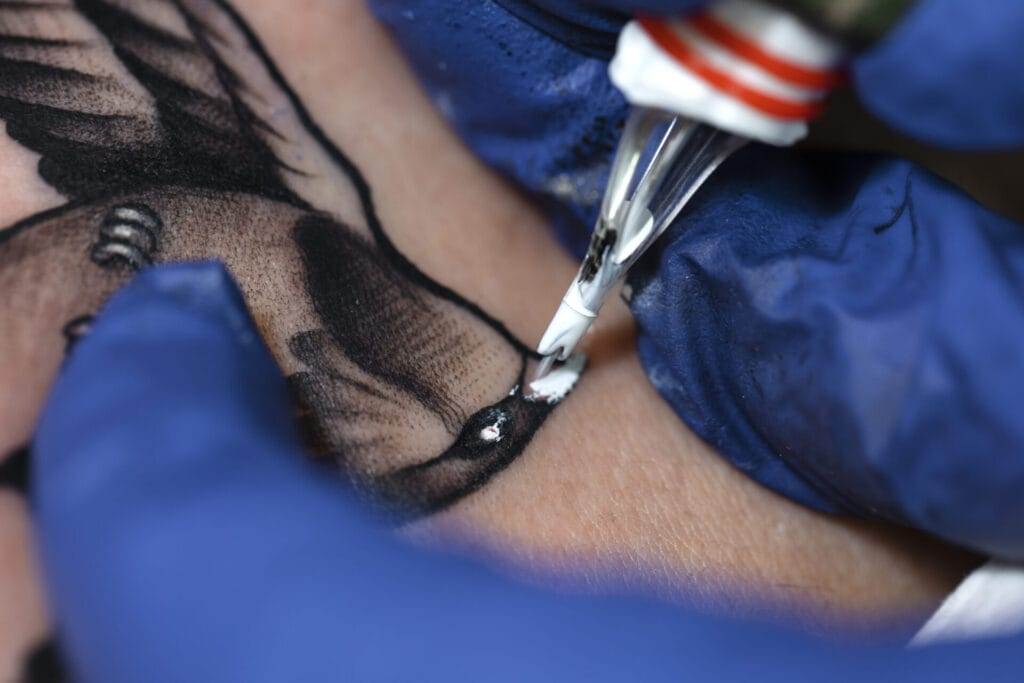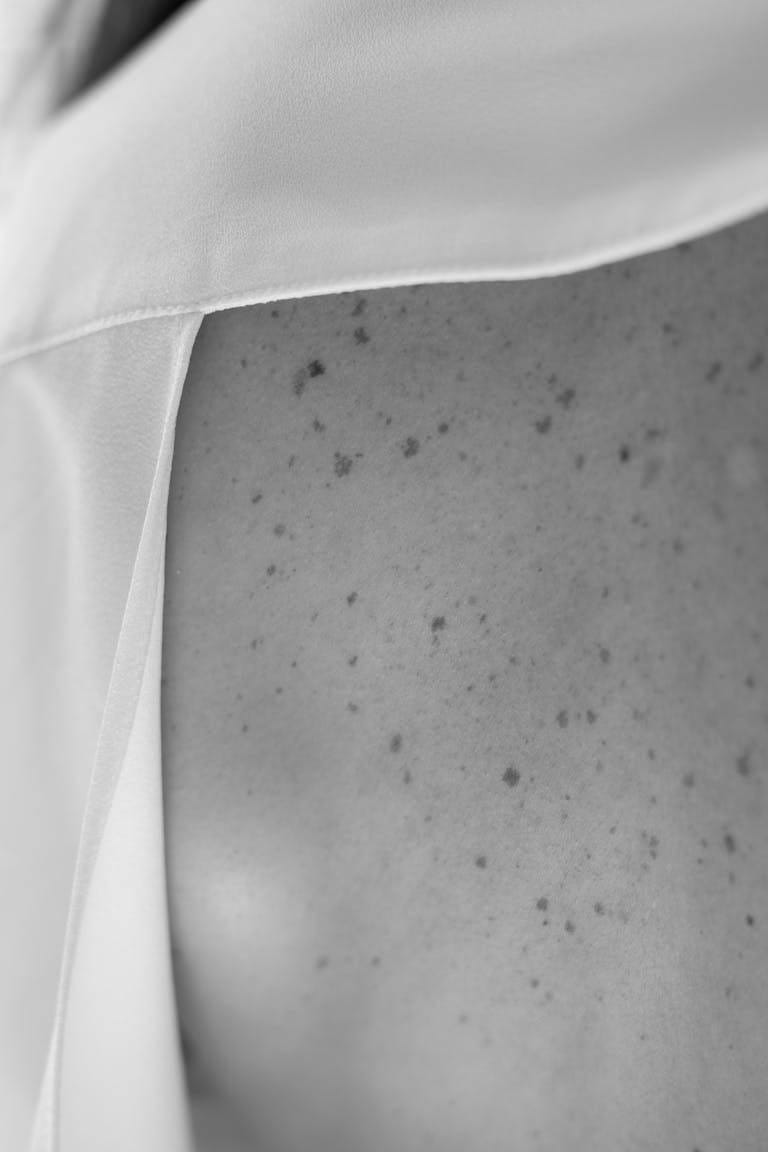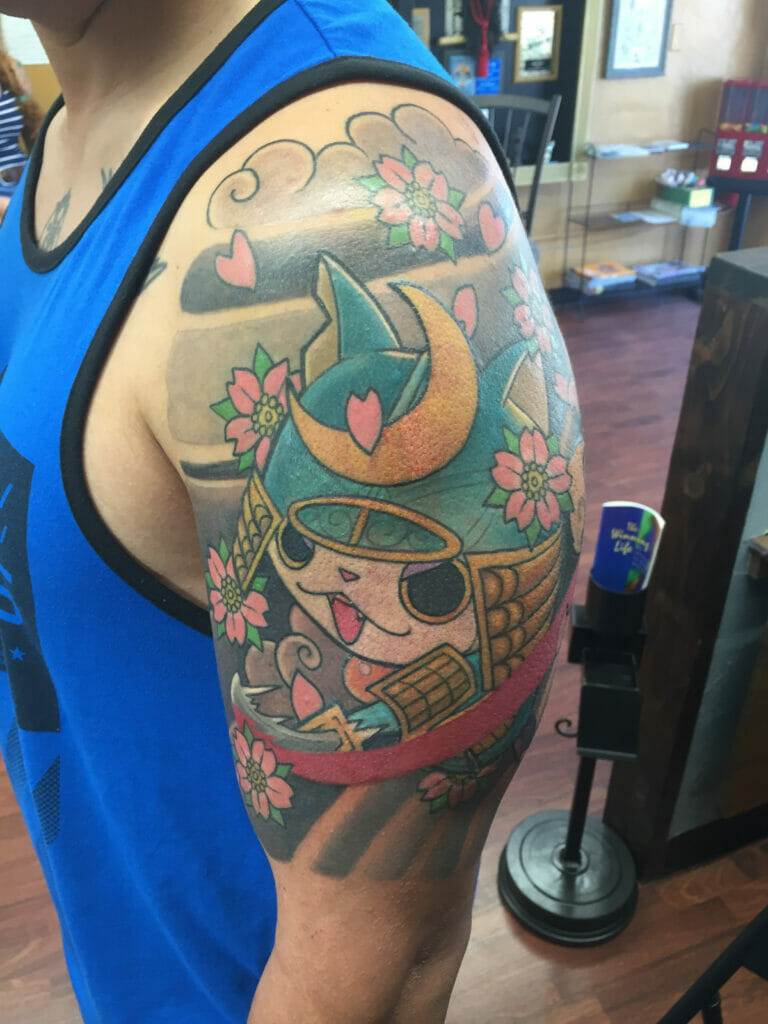
White ink tattoos have emerged as a unique and captivating trend in the world of body art. Unlike traditional tattoos that utilize bold colors and dark lines, white ink tattoos offer a subtler, more ethereal aesthetic. These tattoos are often characterized by their delicate appearance, which can create a stunning contrast against various skin tones.
The allure of white ink lies in its ability to blend seamlessly with the skin, making it an intriguing choice for those seeking a more understated form of self-expression. The history of white ink tattoos is relatively recent compared to their colorful counterparts. While tattooing has been practiced for centuries across various cultures, the use of white ink has gained popularity primarily in the last few decades.
This rise can be attributed to a growing desire for individuality and the exploration of new artistic techniques within the tattoo community. As more people seek to differentiate themselves through body art, white ink tattoos have carved out a niche that appeals to those who appreciate subtlety and elegance in their designs.

Key Takeaways
- White ink tattoos are created using only white ink, resulting in a subtle and unique look on the skin.
- Pros of white ink tattoos include their subtle appearance, suitability for all skin tones, and the ability to create intricate and delicate designs.
- Cons of white ink tattoos include their tendency to fade quickly, potential for uneven healing, and limited visibility on certain skin tones.
- Considerations before getting a white ink tattoo include researching experienced artists, understanding the potential for fading, and considering the placement on the body.
- White ink tattoo designs can range from minimalist and delicate to bold and intricate, offering a wide range of options for personal expression.
- Aftercare for white ink tattoos involves keeping the area clean and moisturized, avoiding sun exposure, and following the artist’s specific instructions for optimal healing.
- White ink tattoo maintenance may involve touch-ups to combat fading and maintaining the design’s visibility over time.
- In conclusion, whether a white ink tattoo is right for you depends on your personal style, skin tone, and willingness to commit to ongoing maintenance for optimal results.
Pros of White Ink Tattoos
One of the most significant advantages of white ink tattoos is their unique aesthetic appeal. The soft, muted tones of white ink can create a beautiful, almost ghostly effect on the skin, making them an excellent choice for intricate designs or delicate patterns. This quality allows for a level of artistry that can be both striking and understated, appealing to individuals who prefer a more refined look.
Additionally, white ink tattoos can be particularly effective for those with lighter skin tones, as the ink can appear more vibrant against a pale backdrop. Another benefit of white ink tattoos is their versatility. They can be used to create a wide range of designs, from intricate lace patterns to minimalist symbols.
This adaptability makes them suitable for various styles and personal preferences. Furthermore, white ink can be layered over existing tattoos, allowing individuals to enhance or modify their body art without completely covering it up. This feature is particularly appealing for those who wish to add depth or complexity to their existing tattoos while maintaining a cohesive look.
Cons of White Ink Tattoos

Despite their many advantages, white ink tattoos are not without their drawbacks. One of the primary concerns is visibility. White ink tends to fade more quickly than darker inks, which can result in a tattoo that becomes less distinct over time.
This fading can be particularly pronounced on areas of the body that are frequently exposed to sunlight or undergo significant movement. As a result, individuals considering a white ink tattoo should be prepared for the possibility that their design may require touch-ups or maintenance to keep it looking fresh. Another potential downside is the healing process associated with white ink tattoos.
Some individuals report that white ink tattoos can be more painful during application compared to traditional black or colored tattoos. Additionally, the healing process may take longer, and there is a higher risk of complications such as scarring or discoloration. This aspect is crucial for potential clients to consider, as it may impact their overall experience and satisfaction with the final result.
Considerations before Getting a White Ink Tattoo
Before committing to a white ink tattoo, there are several important factors to consider. First and foremost, it is essential to choose an experienced tattoo artist who specializes in white ink work. Not all artists are familiar with the nuances of working with white ink, and selecting someone with a proven track record can significantly impact the quality and longevity of the tattoo.
Researching portfolios and seeking recommendations can help ensure that you find an artist who understands your vision and can execute it effectively. Another consideration is skin type and tone. White ink tattoos may not appear as vibrant on darker skin tones, which can lead to disappointment if expectations are not aligned with reality.
It is advisable to consult with your tattoo artist about how the design will translate on your specific skin type. Additionally, individuals with sensitive skin or a history of allergic reactions should discuss these concerns with their artist to determine if white ink is a suitable option for them.
White Ink Tattoo Designs
The design possibilities for white ink tattoos are virtually limitless, allowing for creativity and personal expression. Popular designs often include floral motifs, mandalas, geometric shapes, and intricate lace patterns. These designs can take on an ethereal quality when rendered in white ink, creating an almost three-dimensional effect on the skin.
Many individuals opt for delicate line work that emphasizes the intricacy of the design while maintaining a soft appearance. In addition to traditional designs, some people choose to incorporate text or meaningful symbols into their white ink tattoos. Quotes or phrases rendered in elegant script can create a striking visual impact while conveying personal significance.
The subtlety of white ink allows these designs to blend seamlessly into the skin, making them ideal for individuals who prefer a more discreet form of body art. Ultimately, the choice of design should reflect personal style and meaning, ensuring that the tattoo resonates on a deeper level.
Aftercare for White Ink Tattoos

Proper aftercare is crucial for ensuring the longevity and vibrancy of any tattoo, but it is especially important for white ink tattoos due to their unique properties. After getting a white ink tattoo, it is essential to follow your artist’s aftercare instructions closely. This typically includes keeping the area clean and moisturized while avoiding direct sunlight and soaking in water for an extended period during the initial healing phase.
Using fragrance-free and gentle products is recommended to prevent irritation or allergic reactions. Additionally, applying a thin layer of unscented lotion or ointment can help keep the skin hydrated and promote healing. It is also advisable to avoid picking at scabs or peeling skin, as this can lead to uneven healing and affect the final appearance of the tattoo.
White Ink Tattoo Maintenance
Maintaining a white ink tattoo requires ongoing care to ensure it remains vibrant and well-defined over time. Regular moisturizing is essential, as hydrated skin helps preserve the integrity of the tattoo. Individuals should also be mindful of sun exposure; applying sunscreen with a high SPF can protect the tattoo from fading due to UV rays.
This step is particularly important for white ink tattoos, as they are more susceptible to discoloration when exposed to sunlight. Touch-ups may also be necessary to maintain the clarity of the design. Depending on factors such as skin type, lifestyle, and exposure to sunlight, some individuals may find that their white ink tattoos require periodic visits to their tattoo artist for refreshers.
Discussing maintenance plans with your artist during the initial consultation can help set realistic expectations for how often touch-ups may be needed.
Is a White Ink Tattoo Right for You?
Deciding whether a white ink tattoo is right for you ultimately depends on personal preferences and lifestyle considerations. For those who appreciate subtlety and elegance in body art, white ink tattoos offer a unique opportunity for self-expression that stands apart from traditional designs. However, it is essential to weigh the pros and cons carefully before making a commitment.
If you are drawn to delicate designs and are willing to invest time in maintenance and aftercare, a white ink tattoo could be an excellent choice for you. On the other hand, if you prefer bold colors or are concerned about visibility and fading, exploring other options may be more suitable. Ultimately, understanding your own preferences and consulting with an experienced artist will help you make an informed decision that aligns with your vision for body art.
FAQs
What are white ink tattoos?
White ink tattoos are a type of tattoo that uses only white ink, creating a subtle and more discreet design compared to traditional black or colored tattoos.
How do white ink tattoos differ from traditional tattoos?
White ink tattoos are less visible on lighter skin tones and may appear more like a scar or branding. They also tend to fade more quickly than traditional tattoos and may require touch-ups to maintain their appearance.
What are the pros of white ink tattoos?
Some of the pros of white ink tattoos include their subtle and discreet appearance, especially on lighter skin tones. They can also be a unique and artistic choice for those looking for a more understated tattoo design.
What are the cons of white ink tattoos?
White ink tattoos tend to fade more quickly than traditional tattoos and may not show up well on darker skin tones. The final result can also be unpredictable, as the ink may not always heal evenly or may appear slightly yellowish over time.
What should I consider before getting a white ink tattoo?
Before getting a white ink tattoo, it’s important to consider your skin tone, the potential for fading, and the skill level of the tattoo artist. It’s also important to discuss your expectations and concerns with the artist to ensure you are fully informed before making a decision.






